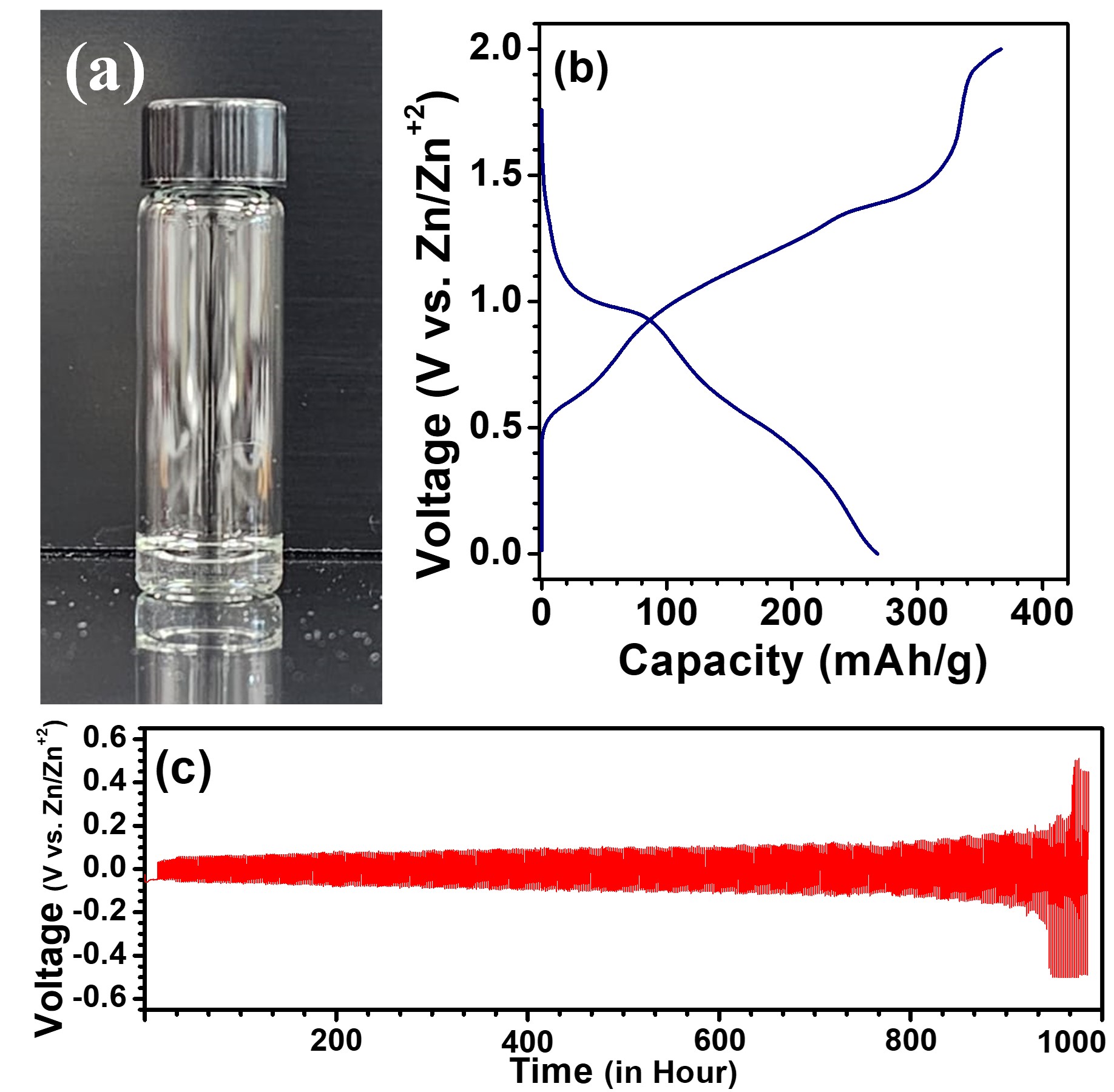Zinc has attracted significant interest as a promising anode material in aqueous rechargeable batteries, offering advantages such as high volumetric capacity (5857 mAhcm
-3 vs 2042 mAhcm
-3 for Li), low cost (2.4 USD.kg
-1 vs. 19.2 USD.kg
-1 for Li), and multiple electrons transfer capability (2e
- vs. 1e
- for Li). However, the intractable side reactions at the negative Zn anode and parasitic hydrogen evolution in the aqueous media hamper the technology unattainable for practical evaluations. Here, we present a hydrated eutectic electrolyte by combining hydrated Zn salt (ZnSO
4.7H
2O) with triethylamine hydrochloride. Eutectic formation between the two salts is attributed to Lewis acid-base interactions, facilitated by substantial charge delocalization exhibited by the SO
4- anions, serving as a strong Lewis bases. The bipolar nature of H
2O readily interacts with the Zn
+2, forming an ion-conducting coordination complex, thereby suppressing the hydrogen evolution reaction (HER). The electrolyte offers a high electrochemical stability window (2.45V vs. Zn/Zn
+2), wide liquid range suitable (T
liquid ³-20
oC), low vapor-pressure, environment insensitivity and the symmetrical Zn||Zn cell demonstrates excellent stability for >1000 hours at 0.1 mA/cm
2. When paired with V
2O
5, Zn exhibits a high discharge capacity of 270 mAh/g, and promising cyclability for >600 cycles. These results highlight its potential as an alternative to aqueous electrolytes for grid-level storage units.


